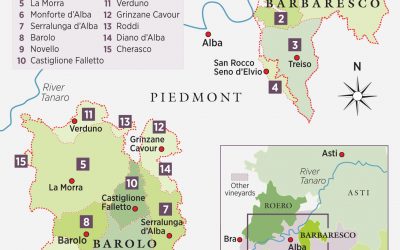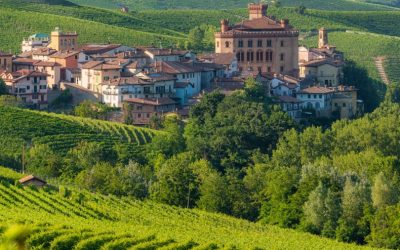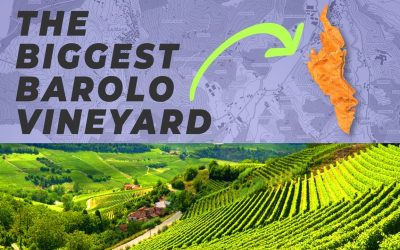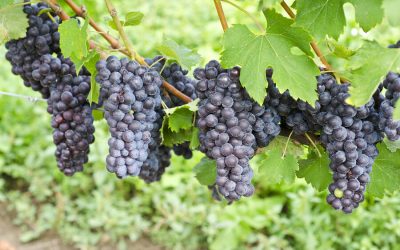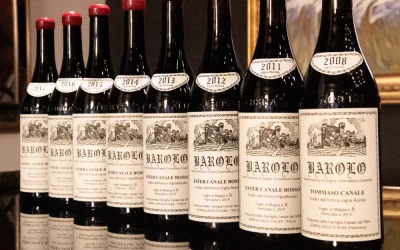What is the main grape in Barolo?
Welcome to the world of Barolo, often called the “king of wines and the wine of kings”. This prestigious Italian wine, produced in the Piedmont region, is cherished by connoisseurs worldwide for its richness, depth, and complexity. In this guide, we’ll delve into the heart of Barolo, exploring its main grape variety and offering a comprehensive understanding of what makes this wine truly remarkable.
The Essence of Barolo: Exploring Nebbiolo, The Main Grape of Barolo
Barolo, a revered red wine from Italy, owes its distinctive qualities to one grape variety: Nebbiolo. Native to the Piedmont region, Nebbiolo is celebrated for producing wines of profound depth, character, and longevity. It’s the sole grape used to make Barolo, according to DOCG (Denomination of Controlled and Guaranteed Origin) regulations.
Characterized by its thick skin and late ripening, Nebbiolo is a demanding grape to cultivate. It needs meticulous attention and the perfect balance of sun, soil, and temperature. However, the rewards are rich, resulting in Barolo’s powerful structure, high tannins, and a captivating array of flavors ranging from red cherries and roses when young to truffles, leather, and prunes as it ages.
What are the characteristics of Nebbiolo?
Nebbiolo is distinguished by its high tannins and acidity, contributing to the longevity and age-worthiness of Barolo wines. It’s recognized for its light, brick-red color, which turns more garnet with age. The grape’s flavors evolve significantly as it matures, transitioning from floral and red fruit notes in its youth to more earthy, complex profiles featuring truffles, leather, dried fruit, and underbrush. Here are the key characteristics of Nebbiolo:
- Appearance: Nebbiolo wines are notable for their light brick-red hue, which tends to fade to an orange tint as the wine ages.
- Aroma: The wines typically have a complex aroma profile with scents of red cherries, roses, tar, and truffles. As the wine ages, these aromas can develop into dried fruit, leather, and anise notes.
- Flavor: Nebbiolo is known for its high tannin content, which can give the wine a bold and astringent flavor when young. Over time, the tannins mellow out and the wine develops a harmonious balance of flavors.
- Acidity: Nebbiolo wines typically have high acidity, which helps to balance out the strong tannic structure and also contributes to the wine’s exceptional aging potential.
- Aging Potential: Thanks to its tannins and acidity, Nebbiolo has a strong aging potential. Most Nebbiolo wines benefit from at least a few years of aging, and the best examples can continue to improve for decades.
- Food Pairing: Due to its bold tannic structure and high acidity, Nebbiolo pairs well with rich, fatty foods that can stand up to the wine’s intensity. Traditional pairings include truffle dishes, game meats, and hearty stews.
Remember, the characteristics of Nebbiolo can vary based on a variety of factors, including the specific growing conditions and winemaking techniques used. As such, different Nebbiolo wines may display different characteristics.
What is the taste of Barolo?
Barolo offers a rich, full-bodied taste, teeming with complex flavors. Young Barolos are marked by notes of cherries, roses, and tar. As they age, the wines develop deeper flavors of prunes, truffles, and leather. Despite their power and concentration, Barolos maintain an admirable balance, thanks to their vibrant acidity and robust tannins.
How long should you age Barolo?
Barolo is known for its exceptional aging potential. By Italian law, Barolo must be aged for a minimum of 38 months after the harvest before it can be released, with at least 18 of those months spent in oak barrels. However, many wine connoisseurs and producers would recommend aging Barolo for at least a decade to allow its complex flavors to fully develop.
Barolo is often at its best between 10 to 15 years after the vintage, although top-quality Barolos can continue to evolve and improve for several decades under optimal cellar conditions. It’s essential to note that the aging potential can vary based on the specific vintage and winemaking practices, so it’s always a good idea to check the recommendations from the winery or a trusted wine critic.
How to serve and pair Barolo?
Barolo is best served at 16-18°C (60-64°F) and benefits from decanting to allow its complex aromas to open up. When it comes to food pairing, Barolo’s high tannins and acidity make it a versatile partner for rich, hearty dishes. Traditional Piedmontese dishes like ‘brasato al Barolo’ (braised beef in Barolo) or truffle-based dishes are classic choices. It also pairs well with robust cheeses, game, and roasted meats.
BAROLO – WINE IN 10

The climate in the region is characterized as warm continental, leading to hot summers and generally cold winters. The Barolo area, due to its higher altitude, tends to be slightly cooler than the neighboring Barbaresco zone. In this region, the microclimate is heavily influenced by factors such as the slope exposure and vineyard location, leading to a diverse climatic range. Nestled in the northwest corner of Italy in the Piedmont region, just south of the Alps, this area with its undulating mountains, verdant valleys, and breathtaking vistas is among Italy’s most picturesque wine regions.
In terms of soil composition, there is a discernible difference between the vineyards. The areas of La Morra and Barolo boast calcareous marls – a blend of clay and silt, resulting in richer and more fertile soils. On the other hand, Monforte d’Alba and Serralunga d’Alba, with their soils richer in sandstone, tend to be less fertile. Castiglione Falletto, located between these two valleys, enjoys a combination of both soil types.
A general taste profile observation suggests that wines from Barolo and La Morra possess a softer and more generous flavor profile, while wines from Monforte d’Alba and Serralunga d’Alba showcase a more robust structure and require a longer maturation period.
Frequently Asked Questions about Barolo:
Is Barolo a dry wine?
Yes, Barolo is considered a dry wine. It is made from the Nebbiolo grape, which is known for its high tannins and acidity, both of which contribute to its dry character. Barolo is typically rich in flavor with notes of cherries, roses, and truffles, along with a range of other complex flavors that can develop over time. Despite its rich flavor profile, it doesn’t contain residual sugar, which is why it’s classified as a dry wine.
How should I store Barolo?
Like other fine wines, Barolo should be stored on its side in a cool, dark place with consistent temperature and humidity. Proper storage is essential for preserving the wine’s quality and supporting its aging process.
Can I drink Barolo without aging it?
While you can drink Barolo without additional aging, it’s designed to mature over many years. Young Barolo can be quite tannic and intense. Aging helps soften the tannins and integrate the flavors, revealing the wine’s true complexity and elegance.
What makes Barolo different from other Italian wines?
Barolo stands out for its usage of the Nebbiolo grape, strict production regulations, long aging potential, and its complex, evolving flavor profile. Its high quality and status have earned it the designation of “DOCG”, the highest classification for Italian wines.
Conclusion: Barolo’s allure lies in its complexity, age-worthiness, and the intricate dance between power and elegance. Behind every bottle is the Nebbiolo grape, a challenging yet rewarding variety that perfectly encapsulates the terroir of Piedmont. Whether you’re a seasoned oenophile or new to the world of wine, understanding and appreciating Barolo offers a captivating journey into the heart of Italian winemaking tradition.
Conclusion
In conclusion, whether you’re a wine enthusiast, a history buff, or simply a traveler looking for unique experiences, the regions of Asti and Alba in Italy have a lot to offer. From the prestigious sparkling wines of Asti to the rich, dry Barolo wines of Alba, the variety is sure to satisfy the palate of any wine lover.
Beyond the vineyards, the historical significance of these regions and their vibrant local cultures provide a rich tapestry that is fascinating to explore. The tradition of truffle hunting in Alba, in particular, is an experience not to be missed.
As with any travel, knowing what to expect regarding the local climate and culture can greatly enhance your experience. We hope that this guide has provided you with a helpful overview and deeper understanding of these charming Italian destinations. No matter which time of year you decide to visit, the regions of Asti and Alba are sure to provide an unforgettable journey through Italian history, culture, and, of course, exceptional cuisine.
